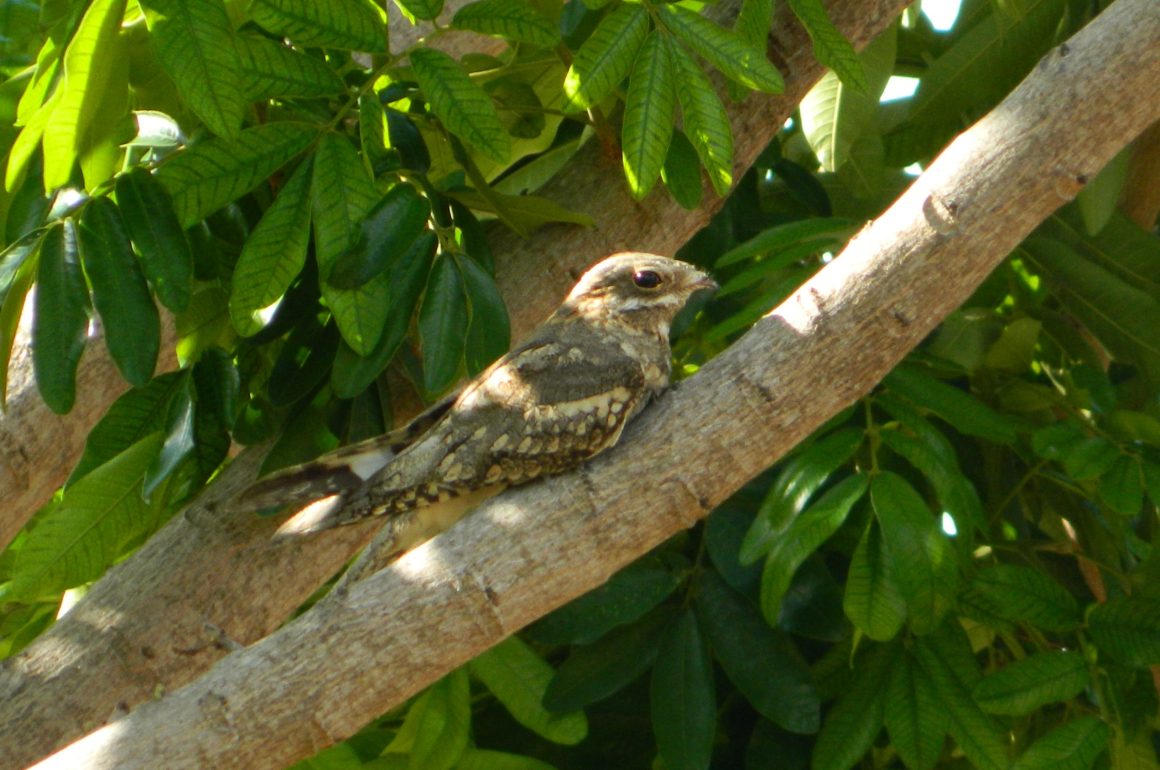
I visited Vilanculos once with my family, mainly to do the things most people do when visiting this site – enjoying the coast, eating great fish and snorkelling. That the area was fantastic for birds however, and as I had never been this far north on the Mozambiquan coast, there were several lifers and other interesting birds that I bagged here.
Vilanculos is now very well known in southern African birding circles because of the specials that turn up at the San Sebastian Peninsula, with Saunders’s Tern being the star, and in line with the Patagonia picnic table effect, specials like Crab Plover, Eurasian Oystercatchers and Damara Terns also hanging around. This site became a target of many a twicher with the discovery of the Saunders’s Tern in 2019. I visited Vilanculos a few years before this and was therefore not aware of this not-to-be-missed site.
Therefore, most of the birding was constrained to the campsite where we stayed. There were quite a few widespread birds around, including indigobirds and finches. Some time was spent watching an approachable Green-winged Pytilia. When I first saw this species as a fledging birder a few years earlier, I became very excited. As I had not yet come across it in my field guide, my “logical” conclusion was that this must be a rare species. Looking back, I’ve noticed that I had this assumption way more than would be statistically justified when coming across birds I couldn’t ID in my first year of birding (when I started out with birding, I also once misidentified what I now know was a Wood Sandpiper as a Lesser Yellowlegs). Because of this particular memory however, I still always greatly enjoy watching Green-winged Pytilias (and even more so their orange-winged cousins, which I’ve seen in Zimbabwe).
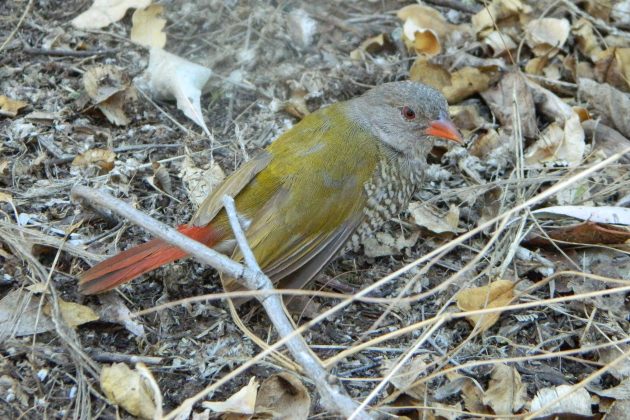
The time my excitement was actually justified is when I noticed that some of the smaller birds feeding on the campsite lawns were Lemon-breasted Canaries, a lifer back then and until today this remains my only sighting of this species. I eventually also found their nest in a palm frond.
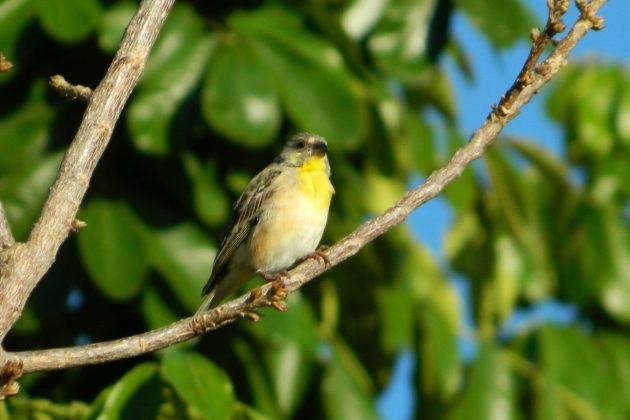
Another subtropical lowland special that I came across at the campsite was a Collared Palm-Thrush. This bird is restricted to the north-eastern edge of the southern African subregion that forms the extent of the region of interest of most birders (and is also the region covered by most guidebooks). In the mornings, it sang from the tops of trees dotted on the small campsite, no better way to indulge a lifer.
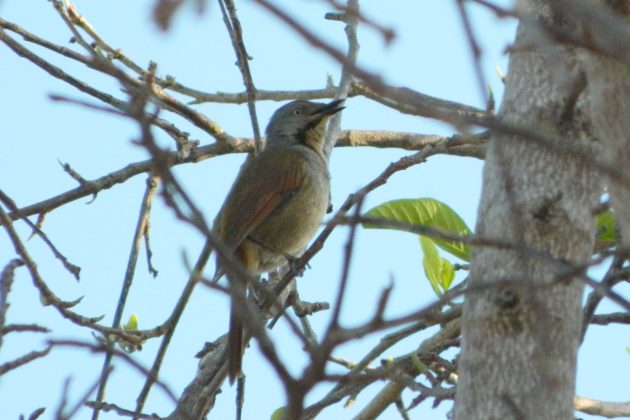
The hinterland revealed my first Olive Bee-eaters, which I had expected to see here. They were hanging out with some Blue-cheeked Bee-eaters which made for a good comparison – I think these species actually used to be the same model when someone decided to paint them differently, as the giss (general impression of size and shape) seems exactly the same, the only difference being their colouration. I guess this is actually natural selection in non-technical terms, with the “someone” being various selective forces. Then of course the “someone” would also need to have used high-quality paint so it could be passed on from one generation to the next… Unfortunately, I only managed to find a photo of the blue-cheeks in my archive…
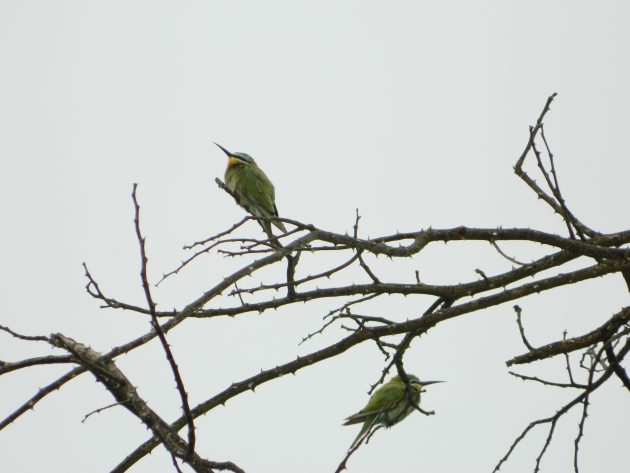
The visit made me eager to explore the many excellent birding spots of Mozambique further to the north, particularly Mt Gorongosa, the Beira grasslands, and the coutadas (hunting concessions covered in miombo). However, I never ended up visiting this region because of ongoing security concerns in the area. I hope that things will eventually settle down here – the area has so much to offer for visitors (especially birders) and especially the local people deserve more peaceful conditions after decades of instability.






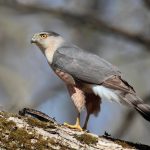
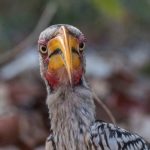
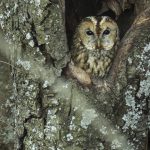
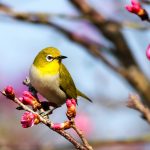

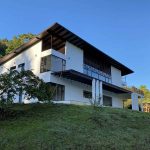
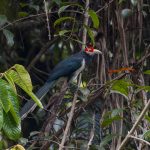
A recent post on birding in the interior: https://www.10000birds.com/high-level-negotiations.htm?doing_wp_cron=1736621458.9737579822540283203125
Speaking Portuguese is a huge advantage when venturing beyond the “roast beef beaches”. Mozambique has a lot to offer for the intrepid traveler.
Wow this is such a cool trip! I had wanted to make pretty much this trip (weaver, tinkerbird, oriole and then the coutadas south of the Zambezi) in 2016, but instead went to Zimbabwe when a group of birders were attacked just a few weeks before we intended to do the trip. I am very eager to visit the sites you did (don’t speak a word of Portuguese though).
Luca, I will join you!